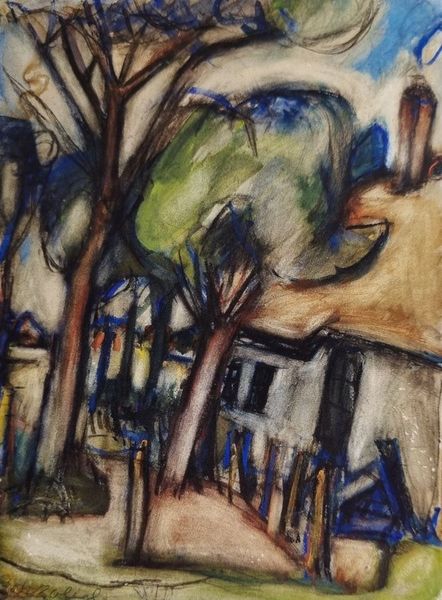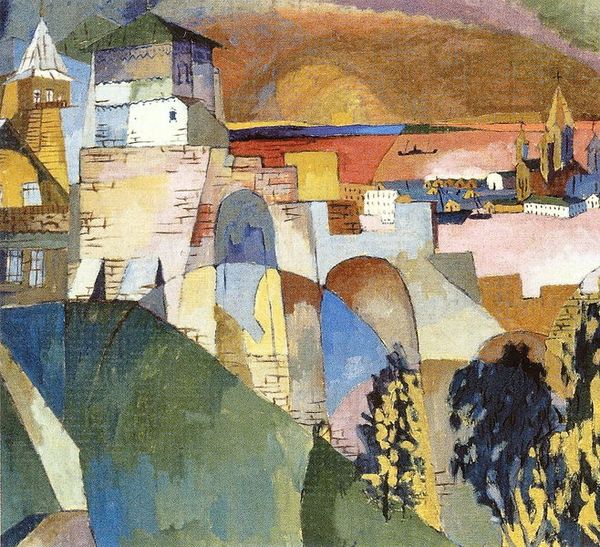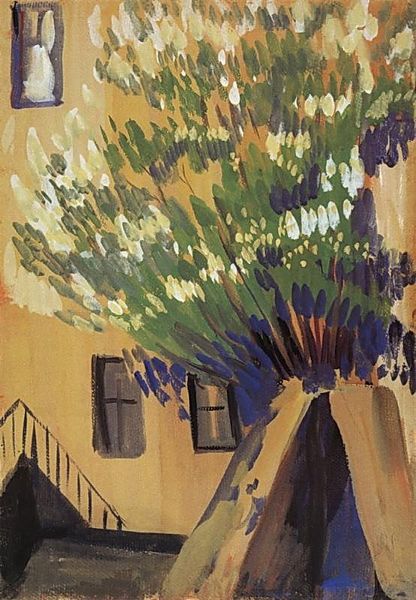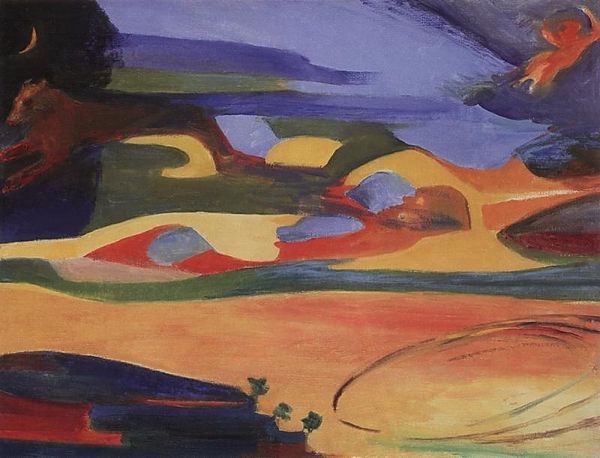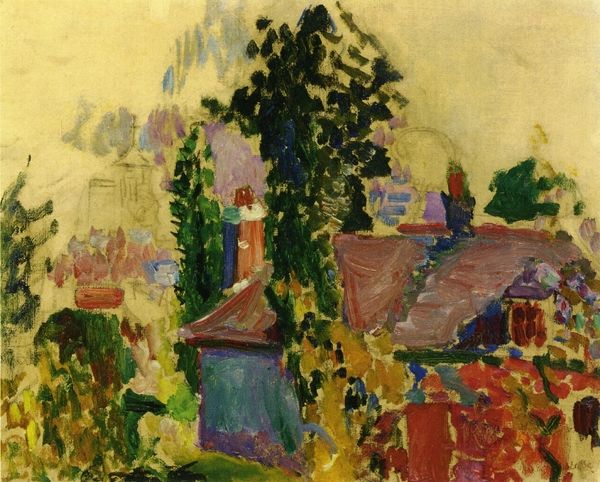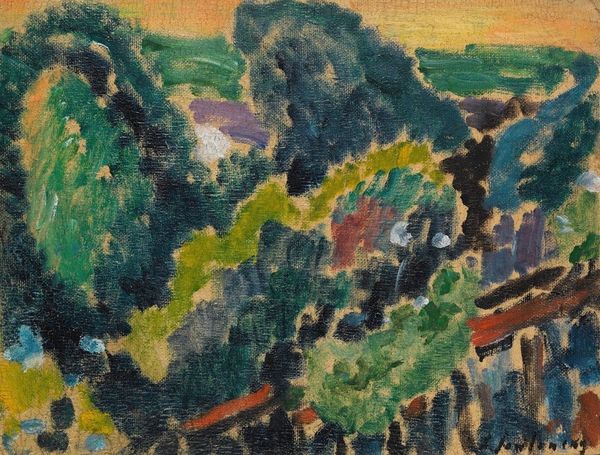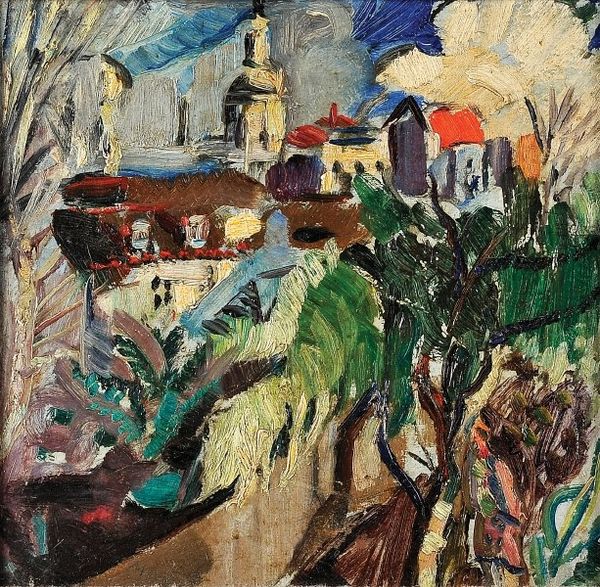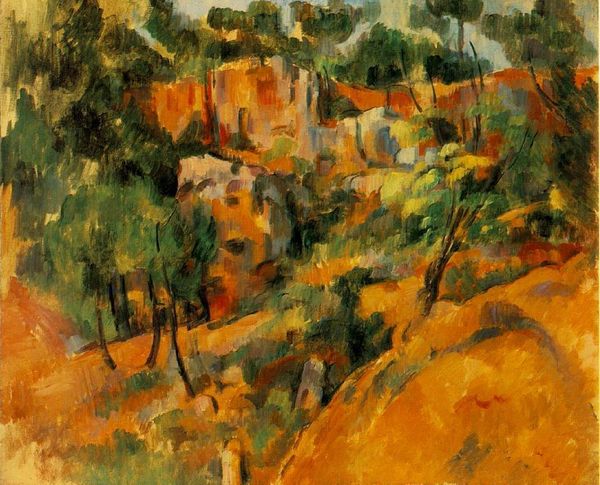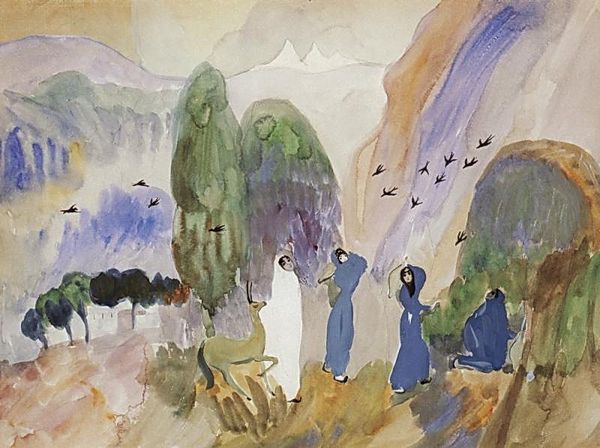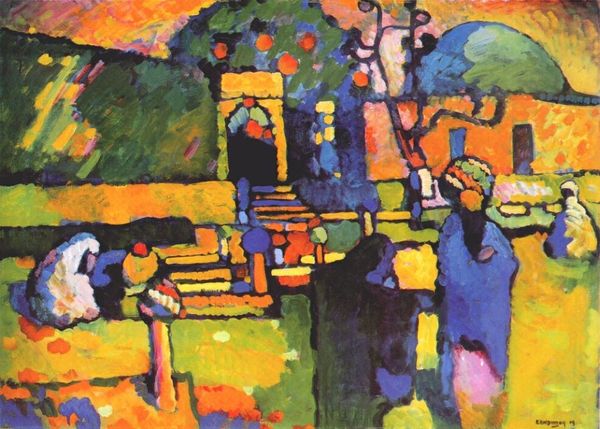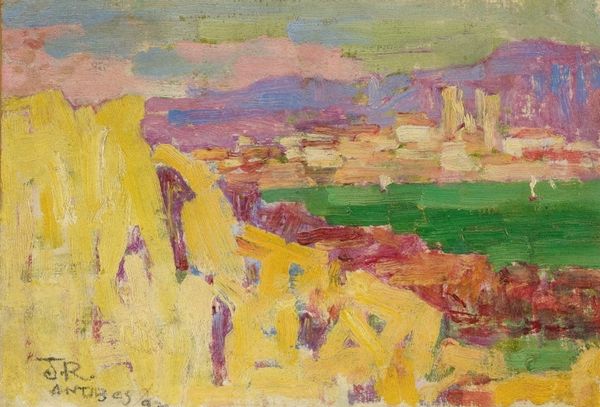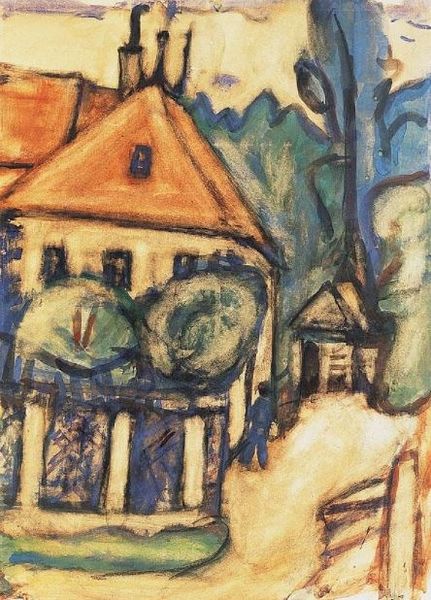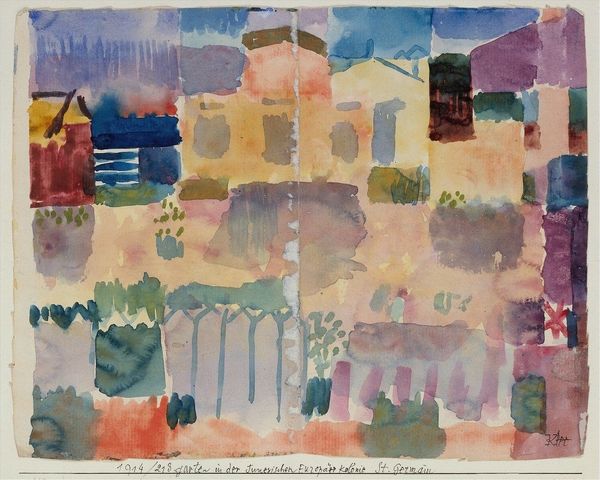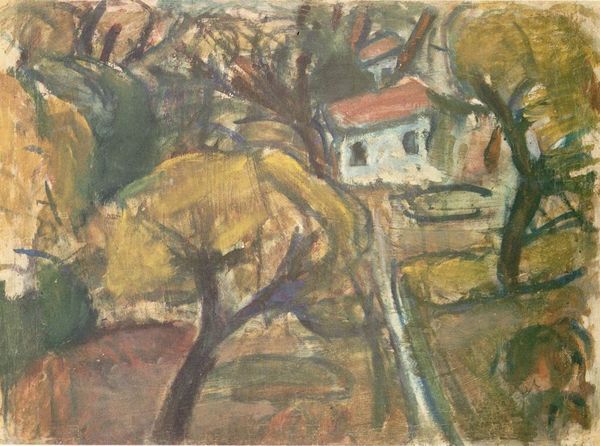
painting, watercolor
#
allegories
#
painting
#
landscape
#
figuration
#
oil painting
#
watercolor
#
orientalism
#
watercolour bleed
Copyright: Public domain US
Curator: Stepping into this gallery, one immediately confronts "Eastern Tale," a watercolor and oil work created in 1903 by Martiros Sarian. Editor: My first impression is a blend of wistful memory and sun-drenched stillness, like a half-remembered dream. Curator: Indeed. Sarian, though working at the turn of the century, infuses it with this timeless quality. Notice the palette—it's dominated by earthy ochres, deep greens, and that evocative lavender haze over the distant mountains. The artist clearly drew inspiration from the East's long-standing legacy within European visual imagination. Editor: Yes, it conjures images of age-old narratives of a timeless East. What symbols speak most strongly to you in it? I notice the shrouded figures and stylized trees seem to evoke themes of procession and nature's enduring watch. Curator: Precisely! The figures, cloaked and faceless, might symbolize a collective memory or represent anonymous wanderers within this landscape of the mind. And those cypresses— they've been markers of both mourning and eternity across cultures for millennia. They punctuate the composition, giving it a vertical rhythm that draws your gaze upwards towards the intangible purple mountains. The East as imagined. Editor: Do you feel Sarian’s interpretation feeds into orientalist stereotypes? I can see that the architecture hints at a specific time, location. Curator: Orientalism, no doubt, lurks as a subtext. Sarian was influenced by European painting while exploring his own Armenian identity. These houses and mountains hint at particular locations, but these figures are universal, timeless. Editor: Considering Sarian’s place in Armenian art history, I can see that blending as key. He isn’t just echoing established tropes but transforming them through personal experience. The figures have universality about them that you would see echoed across a global landscape of folktales. Curator: I agree completely. Ultimately, "Eastern Tale" stands as a poignant testament to how cultural memory informs artistic vision. Editor: Yes, the symbolism is there. "Eastern Tale" is more than an idyllic snapshot, isn’t it? Instead, it captures our longing to find stories and legacies within simple landscapes, echoing deep in human experience and cultural legacy.
Comments
No comments
Be the first to comment and join the conversation on the ultimate creative platform.
